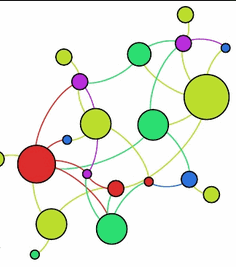Easy Listening
Did you know that you can learn English with songs on EnglishCentral?
Music is something everyone enjoys and it’s a powerful way to learn or teach English. The music video lessons produced on EnglishCentral are specially chosen so they are slow, repetitive and meaningful for English language learning. Also, just plain great songs!
Here’s our list of reasons why music really helps a student learn English or a teacher teach English. But first try one of the music video lessons yourself – we bet you’ll enjoy it and learn a lot of English!
Here are a few other music video lessons we highly recommend studying or teachers assigning students to complete:
Acapella Blank Space | Ukulele Hey Jude | Wonderful World | Sweet Acoustic Cover
10 Reasons Why Music Is A Great Way To Learn A Language
1. THE RESEARCH SAYS MUSIC WORKS!
Music is a proven teaching tool which fosters language retention and production in young learners (Medina, 1993, Jalongo and Bromley, 1984, Borchgrevink, 1982, Martin, 1983, Mitchell, 1983, Jolly, 1975). Teachers need to read many of the comprehensive studies that show undoubtably that students of all ages learn more and learn better with music
Using music in your classroom will help your students succeed as English language students. Language itself is musical, speech has flow and form and songs strongly link and teach the underlying patterns of the language itself. If you aren’t using music in your ELT classroom, you aren’t following strong research driven instructional practices.
2. SONGS ARE MOTIVATING!
Songs, when used correctly, are very motivating for students. Students learn language in a fun way and gain confidence through repetition and voicing. Further, music appeals to the affective needs of students, their inner world and feelings. Music is an input (like stories and pictures) which makes its way through the student’s inner filter (see Krashen’s “affective filter hypothesis”) and helps them learn by appealing to their emotive and social experiences. What pleasures us, teaches us!
3. THEY ARE AUTHENTIC!
The value of authentic language input can’t be undervalued, especially in an EFL environment. Songs are “real” English and provide students with input that is not educational or scripted. Songs also promote highly valued “ambiguity tolerance”, allowing them to not get too upset when they don’t understand every word. An important quality we should help our students develop.
4. THEY ARE STUDENT FRIENDLY!
Songs are seen by students as “cool” and “high tech”. With the popularity of programs like “American Idol”, singing is mainstream, especially singing with a microphone. Everyone can be a star! Teens especially learn through music and “pop” culture, teachers shouldn’t ignore this and especially since English language songs are so international and widely popular, the world over.
Further, students like that their favorite songs can be used to help them learn English. Get your students to bring in their own songs to listen to and share in the classroom. This kind of informal needs analysis really works and is as simple as setting up a “request box” where students can anonymously recommend their favorite English songs.
Songs help create a student centered classroom and gives students a feeling of empowerment and control in the classroom.
5. THE ARE PEDAGOGICALLY “DEEP”!
Songs and music are such a versatile material. They can be used for so many purposes and in so many ways other than just as the usual “listening cloze”. Here are just a few of the main ways music and song can be used as a learning material.
1. As a listening cloze
2. As a vocabulary focus
3. As a game and play
4. As background music for self study/reading
5. As an activity (dance and total physical response)
6. As a social and historical document
7. As introduction, engagement
8. As a writing activity (lyric rewrite)
9. As pronunciation practice / focus (especially intonation & stress)
Songs also have several features beyond just the text/words and sound themselves that make them so pedagogically strong. Songs are usually very repetitive and they recycle vocabular and language structures. Songs are short and condensed – they usually don’t take up so much time in class. Songs are thematic. You can find a song for almost any topic or grammar point. All in all, songs offer us teachers pure gold when it comes to choosing a language learning material.
6. SONGS OPEN THE READING DOOR!
Songs are the perfect tool to help students begin to see and learn the associations between sound and script – it helps foster phonemic awareness. It is a phonics powerhouse and by using songs with lyrics, teachers are helping young learners to read and recognize the connections of sound, rhythm to text.
Karaoke in particular, has been used in classrooms to help struggling readers and is a mainstay tool of special educators to use with students who have a hard time learning to read. ELT teachers can also use karaoke to do the same and help students to become strong second language readers. Visual lyric videos and kinetic typography have become very widely available and are now at any teacher’s fingertips.
7. THEY WIDEN THE CLASSROOM AND CREATE COMMUNITY!
Students will listen to and learn the songs outside the classroom. It helps students become “self – learners”. Further, your own song lessons and files can be made available to students to play at home, on their computers. It extends your classroom into the world and makes it relevant to the larger learning world.
Further, songs are a way to bring students together and create a strong classroom learning community. Songs are very social. I remember once teaching a very difficult Grade 4 ESL class. I was their homeroom teacher and students were from every continent of the world. I started us just singing songs every day to start the morning and afternoon classes. What a difference this small change made. We held hands, we clapped together, we started looking into each others eyes and relating to each other. Students started helping each other more in class and learning more. And just plain feeling happier (and don’t think this isn’t an important objective!). All through the power of music and song
When a teacher uses up to date songs in the classroom, students feel like the classroom does not consist of 4 walls but is a part of the wider world. Using music and songs can be a way to bring a lot of fresh air into your classroom, your learning community.
8. THEY ARE INTELLIGENT!
Music is one of numerous forms of “intelligences” (Gardner, 1993). It is important for educators to foster the development of all these intelligences and address the needs of the whole child. Even or especially so with EFL / ESL students. We don’t just teach a subject (English), we teach a student.
Music helps nurture musical intelligence and helps create a fully developed, balanced person. It is especially successful in educating those children with emotional difficulties. Further, it isn’t just something for young learners. At any stage of life, people need to be intouch with their musical nature. It uplifts, it fosters intelligence, it helps make a person whole.
Too often msuic and the arts are given short attention by educators and we are realizing how wrong this approach has been. As Ken Robinson has described in his well known TED Talk, “Do Schools Kill Creativity?”, we have been wrong in considering education as something that happens only from “the neck up”. The whole body should be taught and learn.
9. THEY TEACH CULTURE!
Without traveling and directly visiting a country, it is terribly hard to learn the cultural aspects to language and the culture of the wider English language community. Culture is something transmitted and not directly taught. All English language teachers need to teach culture, it is a cornerstone of what language is.
Songs have been described colloquially as a “repository of culture”, the place where the spirit of a people are described, preserved and shared. Think of our national anthems, our folksongs, our nursery rhymes. They all contain the core of what we were, are and believe.. Songs are a way to enter into the culture of a community and they transmit the values, ideals, history and nature of the culture. Students benefit and understand the target culture through the deductive, implicit learning that occurs through song.
10. THEY ARE FREE!
Who doesn’t like a bargain? Songs are widely available free online and can be found on many video sharing sites and resource sharing communities. Most countries have some level of “fair use” for education when it comes to using songs in our classrooms. Songs are also low tech – all you really need is a device to play them. Could be a CD player, a cell phone or your own voice, yes, this too is a “device”!
If songs are anything, they are freedom. They can be sung and enjoyed for the most part, freely. It shouldn’t cost you or your school a penny!
If you aren’t using music or song as a study or teaching tool – YOU SHOULD BE!
RECOMMENDED READINGS / RESOURCES
50 Ways To Use Music And Song In The Classroom. EFL Classroom 2.0
REFERENCES
Borchgrevink, H. (1982). Prosody and musical rhythm are controlled by the speech hemisphere. In M. Clynes (Ed.), Music, Mind,and Brain. New York: Plenum Press, pp. 151-157.
Gardner, H. (1993). Multiple intelligences: The theory in practice. New York: Basic Books.
Jalongo, M. & Bromley, K. (1984). Developing linguistic competence through song. Reading Teacher, 37(9), 840-845.
Jolly, Y. (1975). The use of songs in teaching foreign languages. Modern Language Journal, 59(1), 11-14.
Krashen, S. (1982). Principles and Practice in Second Language Acquisition. Oxford: Pergamon Press.
Martin, M. (1983). Success! Teaching spelling with music. Academic Therapy, 18(4), 505-506.
Medina, S. (1993). The effect of music on second language vocabulary acquisition. FEES News (National Network for Early Language Learning, 6 (3), 1-8.
Milman, C. (1979). The metronome and rote learning. Academic Therapy, 14 (3), 321-325.
Mitchell, M. (1983). Aerobic ESL: Variations on a total physical response theme. TESL Reporter, 16, 23-27.













 Many advanced students benefit from watching and studying the best TED Talks on EnglishCentral.
Many advanced students benefit from watching and studying the best TED Talks on EnglishCentral.

 Good teachers often say that “95 percent of good teaching is just getting students motivated.” Online learning presents a new opportunity to both measure engagement and create learning methods that increase it. Facebook sets the high bar for online engagement—65 percent of its billion-plus users are on the platform for an average of 40 minutes per day.
Good teachers often say that “95 percent of good teaching is just getting students motivated.” Online learning presents a new opportunity to both measure engagement and create learning methods that increase it. Facebook sets the high bar for online engagement—65 percent of its billion-plus users are on the platform for an average of 40 minutes per day.

 The classroom experience does not contain “agency” or purpose.
The classroom experience does not contain “agency” or purpose. The classroom does not offer students enough time on task with the target language.
The classroom does not offer students enough time on task with the target language.





 Hello and Welcome! My name is Gordon Bateson.
Hello and Welcome! My name is Gordon Bateson.